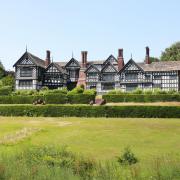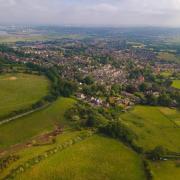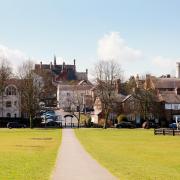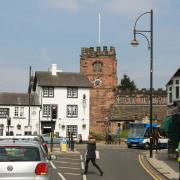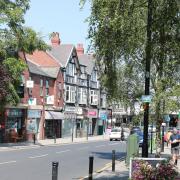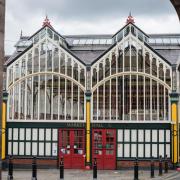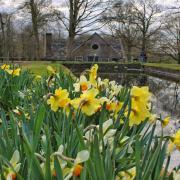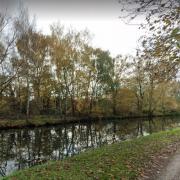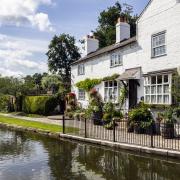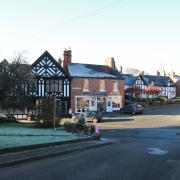Andrew Beardmore is expert on all things odd and quirky in Cheshire and he’s written about them in a new book. Here are just a few odd facts.

The Final Leg
Sir Arthur Aston of Catton Hall, near Frodsham, was declared by Charles I to be more feared by the enemy than any other man in his army. However, Sir Arthur met the most ignominious of ends, when fighting gallantly in Ireland in 1649 – for he is said to have been beaten to death…with his own wooden leg!

Erratic science
A c.30-ton granite boulder in Macclesfield’s West Park which is actually a glacial erratic, carried south from Cumbria by advancing glaciers around 12,500 years ago. The boulder was presented to the people of Macclesfield in their new public park in 1857, having been discovered during excavations nearby. It took a team of eight horses to move it the 1km to its current location, after which a wonderful brass plaque was affixed to the stone, proclaiming its date of placement and its origin – the latter claiming it had been carried south by ‘an iceberg from Cumberland’ – an interesting insight into how science and English county geography has since changed! As for the origin of the name ‘erratic’, it derives from the Latin ‘errere’ meaning ‘error’ or ‘wanderer’ – so in this case, a rock that shouldn’t be there as it has totally different characteristics to the rock strata around it. They were once thought to have been deposited by a great flood, which in a way they sort of were.

Three Shires Head
This is the Packhorse Bridge over the River Dane at Three Shires Head, where Cheshire, Derbyshire and Staffordshire all meet. The spot was also a well-known meeting point for illegal prize-fighting, where the protagonists and crowd could hot-foot it over the appropriate county border when challenged by officials of other counties!

The Alderley Wizard
According to a late 18th century legend, a farmer from Mobberley was walking along Alderley Edge, taking a white mare to sell at Macclesfield market, when an old man in grey and flowing garments stopped him, offering the farmer a sum for his horse. The farmer refused, anticipating greater profit in Macclesfield, but returned empty-handed. On his return journey, the old man appeared again, repeating his offer, which this time was accepted. The farmer followed the old man to a place known locally as Stormy Point, where he raised a wand and uttered a spell. Immediately, the rocks opened, revealing huge iron gates which led into a cavern – where the farmer observed countless men and white horses, all asleep. The old man paid the farmer the agreed sum, took his horse, and explained that the sleeping men and horses would one day awaken when England was next in mortal danger!

The Rector’s Pulpit
The Priest’s House in Prestbury was built in the 16th century although it was much altered in the 17th century. It eventually became a vicarage in the 17th century, the local manor in 1706, and later cottages and even a bank. But during the Commonwealth period of the mid-17th century, the rector – who had been ejected from his church over the road – used the platform on the right-hand side as his pulpit! Later during 20th century restoration, two cast-iron firebricks were found with the oldest dating to 1635 and including the arms of Charles I. Turn to our feature on page 102 for an update on the Rector’s Pulpit.

Rostherne Mere
Legend has it that Rostherne Mere is bottomless. Another legend tells of a workman who cursed a church bell as it was being conveyed to Rostherne St Mary’s – at which point the bell came loose and knocked the man into the mere where he drowned. The bell was said to have followed him into the mere never to be seen again – which, of course, it wouldn’t as the mere is clearly bottomless!

Dawson’s dig
In the village of Tushingham, near Malpas, all seven of the Dawson family were killed by the plague in 1625. Knowing that he was beyond help, and too heavy for the others to carry, the father – a big man – dug his own grave and lay down in it to die.
Farmer’s Wives and a Big Chest
St Oswald’s Church at Lower Peover is home to a big oak chest which for many years housed parish records, vicars’ robes, chalices and church documents. Local legend has it that if a girl wished to be a farmer’s wife she must be able to lift the chest lid with one arm - thus demonstrating enough strength to be able to lift the famous Cheshire cheeses made in the area.
Midsomer Bidston?
The list of former vicars at St Oswald’s church in Bidston reveals that there were nine vicars here, in nine consecutive years of the 18th century! But not why…




